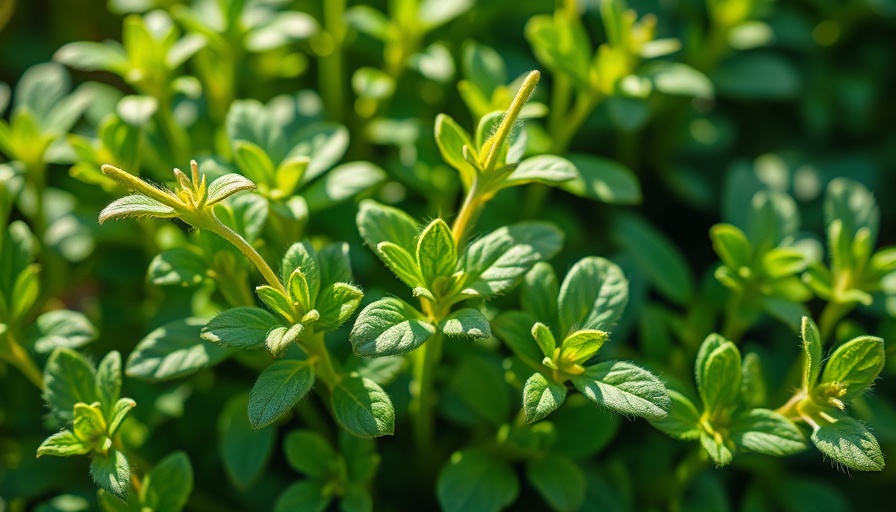
Unleash the Flavor of Your Kitchen: Grow Greek Oregano at Home
Greek oregano, known scientifically as Origanum vulgare var. hirtum, holds a special place in culinary practices, especially within North America. Its slightly spicy, earthy flavor enhances a variety of dishes, making it a must-have for any home cook or aspiring chef. For those interested in sustainable living and healthy cooking, growing your own Greek oregano adds fresh flavors to your meals while reducing the carbon footprint associated with store-bought herbs.
Growing Greek Oregano: Quick Overview
This perennial herb thrives in USDA hardiness zones 5 to 10 and can reach sizes of up to 2 feet tall and wide, making it an excellent choice for both garden beds and container gardening. Greek oregano loves full sun and well-draining, sandy loam soil, with a pH of 6.5 to 7.0, favoring a slightly acidic to neutral environment.
When planting, keep a distance of 12 inches between plants and bury seeds at a depth of 1/8 inch, while transplants should roam a little deeper, resting at the depth of their pots. It’s a low-maintenance plant, known for its drought resistance and robust nature.
The Magic of Oregano: Cultural Significance and Culinary Uses
Originating from the rocky terrains of Greece and Turkey, Greek oregano is not just an herb but a cultural touchpoint rich with history. Used extensively in Mediterranean cuisine, it plays a pivotal role in flavoring traditional dishes such as pizza, pasta sauces, and Greek salads. Incorporating Greek oregano into your dishes ensures a taste of the Mediterranean right in your kitchen!
Pest Control for a Flourishing Oregano
Like all plants, Greek oregano is not immune to pests. Common threats include aphids and spider mites, which can affect plant health and yield. An organic approach to pest control can include companion planting, where you plant herbs and flowers that naturally repel these pests. Consider nearby marigolds or basil as natural partners to your oregano.
Harvesting and Preserving Your Bounty
When it's time to harvest, wait until the flowers bloom, which typically occurs from mid-summer to fall. This is when the flavor is at its peak. Use garden scissors to snip off the stems and leaves, allowing the remaining plant to continue thriving. You can dry the harvested oregano for later use or store it fresh in your fridge.
Practical Tips for Success in Your Herb Garden
1. **Water Wisely**: Greek oregano requires minimal watering, adjusting to a watering routine that dries the soil between waterings. 2. **Fertilization**: Use organic fertilizers sparingly. Oregano prefers nutrient-poor soils which contribute to its robust flavor. 3. **Companion Planting**: Integrate flowers that attract pollinators to boost growth and health, making your garden a hub for wildlife like bees and butterflies that enhance biodiversity.
Conclusion: The Reward of Home-Grown Flavor
Growing your own Greek oregano not only adds flavor to your kitchen but also cultivates a connection to the garden and the environment. By following these tips, you will enjoy an abundant and aromatic herb that elevates every meal. Start your journey with Greek oregano today and embrace the joy of home gardening!
 Add Row
Add Row  Add
Add 




Write A Comment